
 Many people today remember Johnny Cash mostly for his angsty Man in Black persona, but I’ll always remember him for his dumb Chicken in Black character. People tend to forget that Cash wasn’t always the dark and dreary troubadour that he’s portrayed as on licensed Hot Topic tees these days; instead, he lived most of the ’80s high on novelty tunes, chronic relapses and made-for-television movies like the wonderfully saccharine The Pride of Jesse Hallam.
Many people today remember Johnny Cash mostly for his angsty Man in Black persona, but I’ll always remember him for his dumb Chicken in Black character. People tend to forget that Cash wasn’t always the dark and dreary troubadour that he’s portrayed as on licensed Hot Topic tees these days; instead, he lived most of the ’80s high on novelty tunes, chronic relapses and made-for-television movies like the wonderfully saccharine The Pride of Jesse Hallam.
Cash headlines as the titular Jesse, a good ol’ boy from Muhlenberg, Kentucky, who recently had to sell his farm and move to the big city because his daughter has a back disease, see, and needs an operation at the Children’s Hospital. Between enrolling his son in school, being hassled by an stereotypical cop and trying to find a job before the cash runs out, it slowly comes to light that Jesse has a big problem: Everyone in Cincinnati hates Kentucky trash.
Oh, and he can’t read.
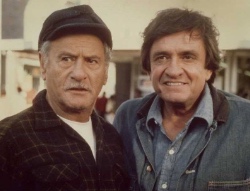 For most of his life in Kentucky, he’s gotten along pretty good, always commanding a good attitude toward work, with plenty of down-home witticisms and a genuine “aw, shucks” demeanor that endears him; too bad that doesn’t really fly in the big city, as he’s forced to load fruit trucks in the middle of the night, at a business run by an old Italian stereotype (Eli Wallach, Baby Doll).
For most of his life in Kentucky, he’s gotten along pretty good, always commanding a good attitude toward work, with plenty of down-home witticisms and a genuine “aw, shucks” demeanor that endears him; too bad that doesn’t really fly in the big city, as he’s forced to load fruit trucks in the middle of the night, at a business run by an old Italian stereotype (Eli Wallach, Baby Doll).
Jesse eventually confronts his illiteracy with the help of a toned-down Brenda Vaccaro (Airport ’77), eventually reading to his daughter (kinda) as she lay in a hospital bed; it’s an act that inspires both him and his somewhat illiterate son to take a GED class. As Cincinnati punks play rock music and create general chaos in the night class, Johnny sets them straight, letting them know he’s there to graduate, darn it, and nothing’s going to stop him.
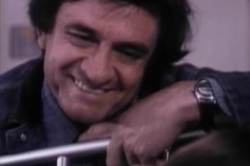 Broadcast on CBS in the spring of 1981, Cash, though no actor, still has a commandeering screen presence that works for a by-the-numbers drama like this as both Wallach and Vaccaro happily take their paychecks; the soundtrack also contains plenty of high-quality Cash tunes, but, alas, no soundtrack album was made available.
Broadcast on CBS in the spring of 1981, Cash, though no actor, still has a commandeering screen presence that works for a by-the-numbers drama like this as both Wallach and Vaccaro happily take their paychecks; the soundtrack also contains plenty of high-quality Cash tunes, but, alas, no soundtrack album was made available.
Directed with a flat flair by Gary Nelson, who may remember as the guy behind the Gary Coleman theatrical vehicle Jimmy the Kid, which was, surprisingly, based on a novel by Donald Westlake — a book that I hope Jesse Hallam wasn’t too proud to read. —Louis Fowler


 The intergalactic pirate Divatox — whose name kinda sounds like a feminine hygiene product of some sort — is chasing a little person dressed in an ill-fitting troll costume through the woods on a swirling green planet; back here on Earth, however, a young kid named Justin is feeling a little blue because his mom is dead. It doesn’t help when a random Power Ranger, right in the middle of a training sesh, spin-kicks himself right out of the ring and into a broken back. Ouch!
The intergalactic pirate Divatox — whose name kinda sounds like a feminine hygiene product of some sort — is chasing a little person dressed in an ill-fitting troll costume through the woods on a swirling green planet; back here on Earth, however, a young kid named Justin is feeling a little blue because his mom is dead. It doesn’t help when a random Power Ranger, right in the middle of a training sesh, spin-kicks himself right out of the ring and into a broken back. Ouch!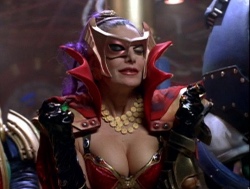
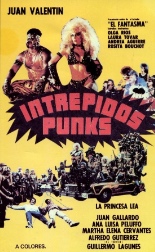
 With a title that translates to
With a title that translates to 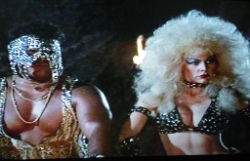
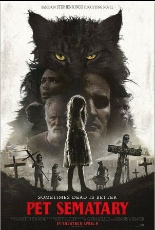
 Love, like or loathe 2017’s
Love, like or loathe 2017’s 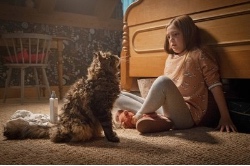

 Three years after Norway showed Hollywood what a contemporary disaster movie can and should be with
Three years after Norway showed Hollywood what a contemporary disaster movie can and should be with 